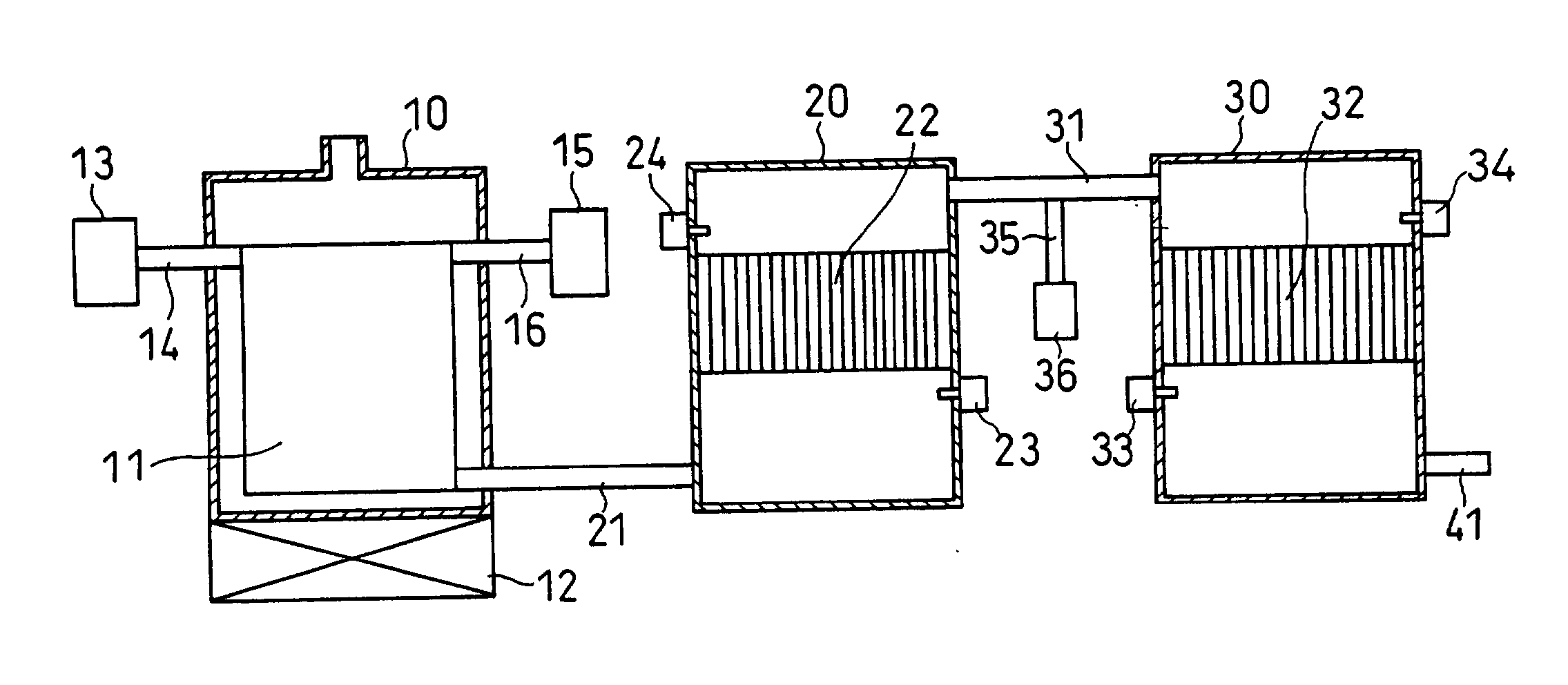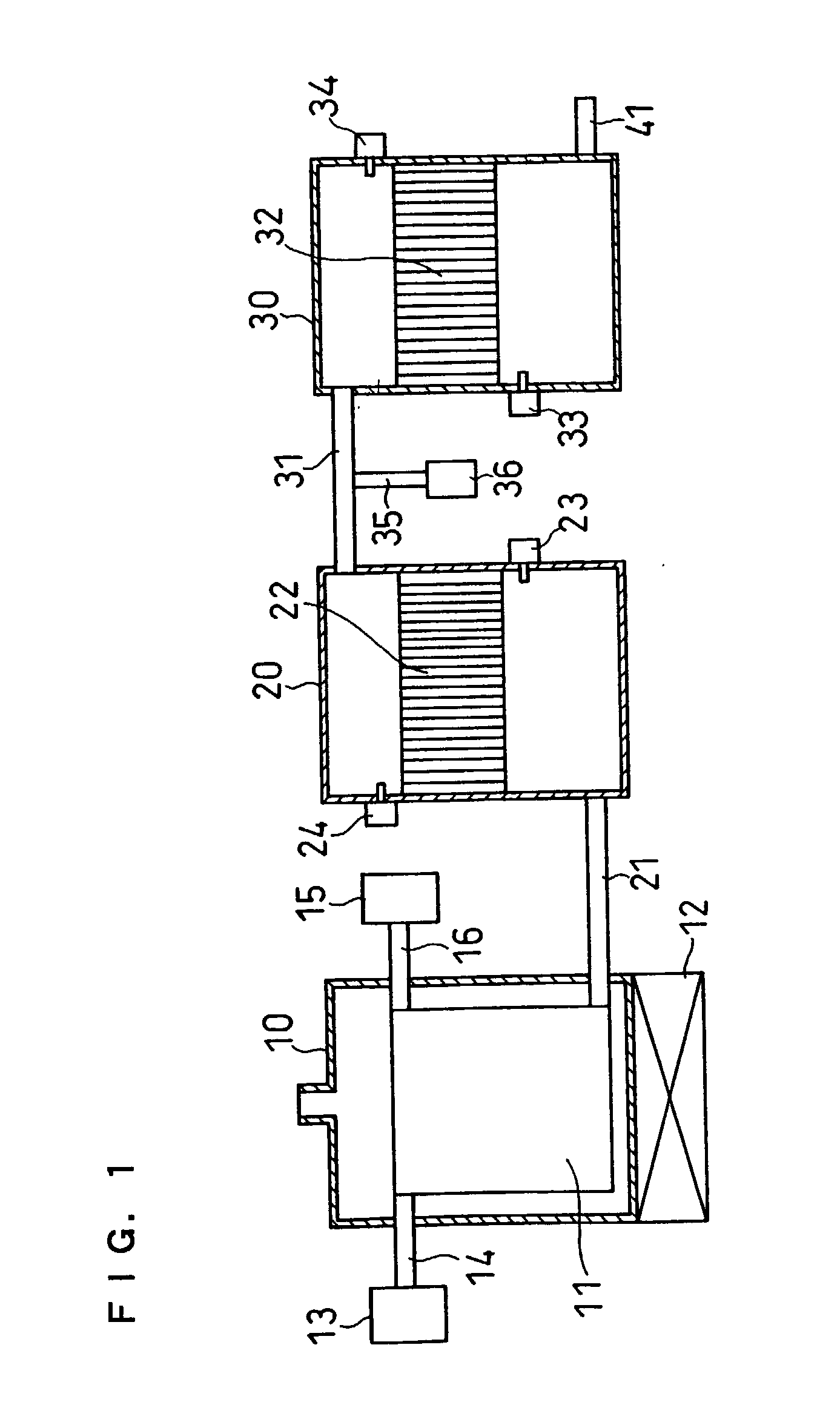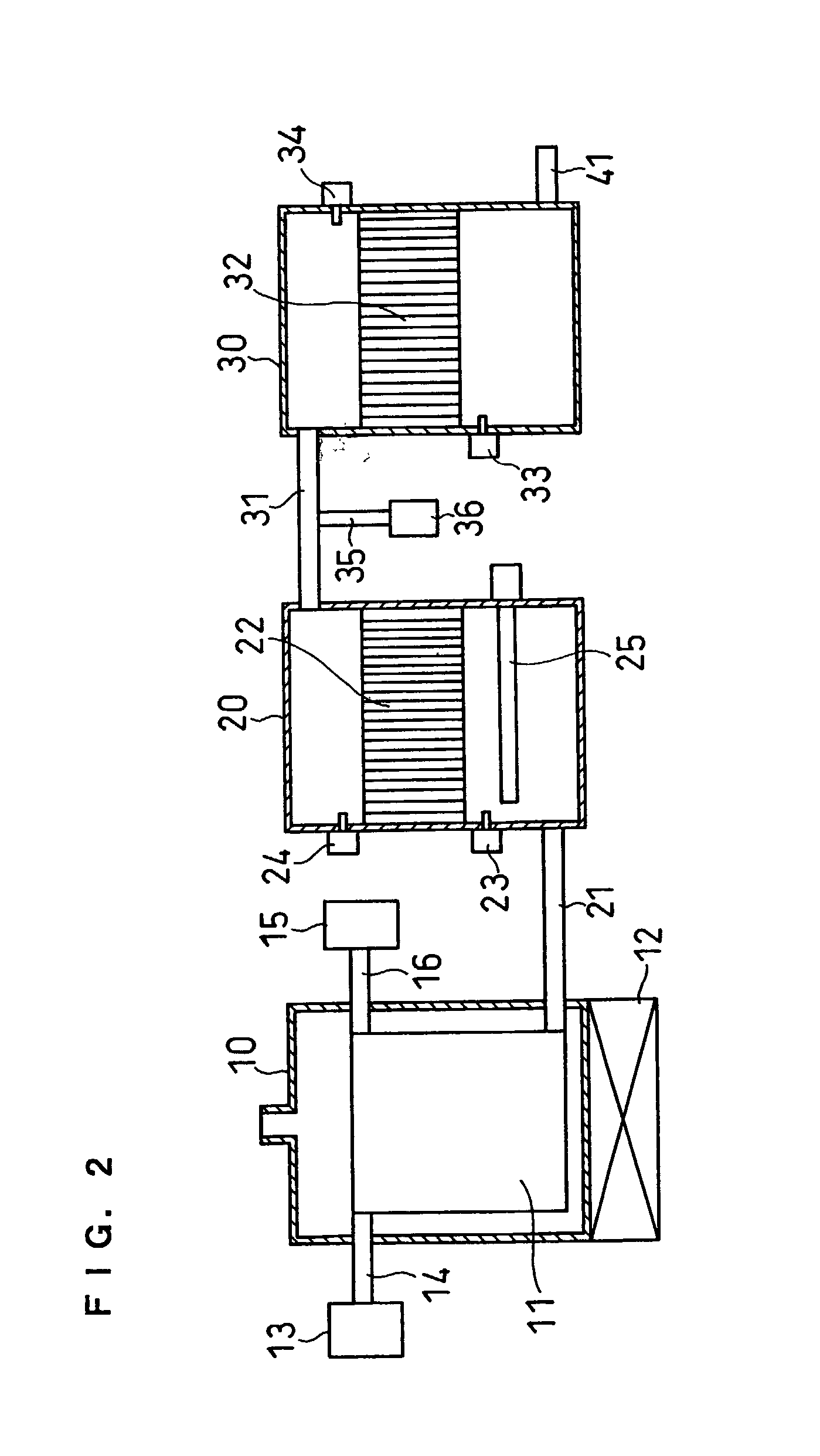Apparatus for forming hydrogen
a technology of apparatus and hydrogen, which is applied in the direction of metal/metal-oxide/metal-hydroxide catalysts, chemical/physical/physical-chemical stationary reactors, and hydrogen fuel infrastructures, etc., can solve the problems of large co reduction, catalyst activity deterioration, and inability to large-scale co reduction, etc., to reduce the high concentration of carbon monoxide, reduce the effect of exothermic activity and catalytic activity of oxidation reaction
- Summary
- Abstract
- Description
- Claims
- Application Information
AI Technical Summary
Benefits of technology
Problems solved by technology
Method used
Image
Examples
embodiment 1
[0066] The following will describe an example of the operation of the hydrogen producing apparatus of
[0067] Methane gas was used as the feedstock, and 1 mol of methane gas was added with 2.5 mol of water and was steam reformed. The resultant outlet gas in the reforming section 10 was a hydrogen gas containing about 10% of carbon monoxide and about 10% of carbon dioxide. When this hydrogen producing apparatus was operated in a steady manner, the carbon monoxide concentration of the outlet gas of the shifting section 20 was about 1%. At this time, the temperatures of the shift catalyst upstream and downstream of the hydrogen gas flow were detected by the first temperature detector 23 and the second temperature detector 24 to examine if the shifting section was kept at a temperature capable of decreasing carbon monoxide effectively.
[0068] Air was added to this hydrogen gas from the air supply section 36 such that the amount of oxygen contained in the air became four times the amount of...
embodiment 2
[0072] Embodiment 2
[0073] FIG. 2 shows the constitution of a hydrogen producing apparatus of this embodiment.
[0074] The difference from FIG. 1 is that a heater 25 is provided as heating means in the shifting section 20. The heater 25, which is, for example, an electric heater, minimizes condensation of water especially in the shifting section when the apparatus is started, shortens the start-up time, and allows the activity of the shift catalyst to be maintained.
[0075] The dew point of the reformed gas can be calculated on the basis of the amounts of the feedstock and water supplied. For example, when the feedstock is methane and water is supplied in an amount three times the number of moles of the methane, provided that 100% of the methane is steam reformed into carbon dioxide and hydrogen, the steam partial pressure of the gas after the reforming reaction becomes one sixth from the reaction formula. Thus, the dew point of the gas can be easily calculated.
[0076] According to the pr...
embodiment 3
[0077] Embodiment 3
[0078] FIG. 3 shows the constitution of a hydrogen producing apparatus of this embodiment. The apparatus has almost the same constitution as that of Embodiment 2 except that the heater 25 is removed from the shifting section and an air supply section 26 is connected to the gas conduit 21 through a gas conduit 27.
[0079] In this embodiment, the air supply section 26 supplies air to the reformed gas to heat the shifting section and the shift catalyst. Also, in the use of the shift catalyst of the present invention, oxygen in the supplied air oxidizes part of the reformed gas component readily, and heat is generated upon the oxidation to heat the shifting section and the shift catalyst.
[0080] Accordingly, in the same manner as in Embodiment 2, this embodiment makes it possible to heat the shifting section to prevent water condensation in the shifting section, to shorten the start-up time of the apparatus, and to prevent deterioration of the properties of the shift cat...
PUM
| Property | Measurement | Unit |
|---|---|---|
| temperature | aaaaa | aaaaa |
| temperature | aaaaa | aaaaa |
| temperatures | aaaaa | aaaaa |
Abstract
Description
Claims
Application Information
 Login to View More
Login to View More - R&D
- Intellectual Property
- Life Sciences
- Materials
- Tech Scout
- Unparalleled Data Quality
- Higher Quality Content
- 60% Fewer Hallucinations
Browse by: Latest US Patents, China's latest patents, Technical Efficacy Thesaurus, Application Domain, Technology Topic, Popular Technical Reports.
© 2025 PatSnap. All rights reserved.Legal|Privacy policy|Modern Slavery Act Transparency Statement|Sitemap|About US| Contact US: help@patsnap.com



